Complete Solutions to Solved Example of chapter GENERAL ORGANIC CHEMISTRY of Class 11 book with complete answers and questions
| Class 11 | CHEMISTRY |
| Chapter | GENERAL ORGANIC CHEMISTRY |
| CENGAGE CHEMISTRY | Solved Example |
| Number Of Questions | 18 |
| Academic Year | 2023-24 |
Which of the following is the most stable resonance structure ?
View SolutionWhich of the following is a most likely product from the reaction as shown below ?
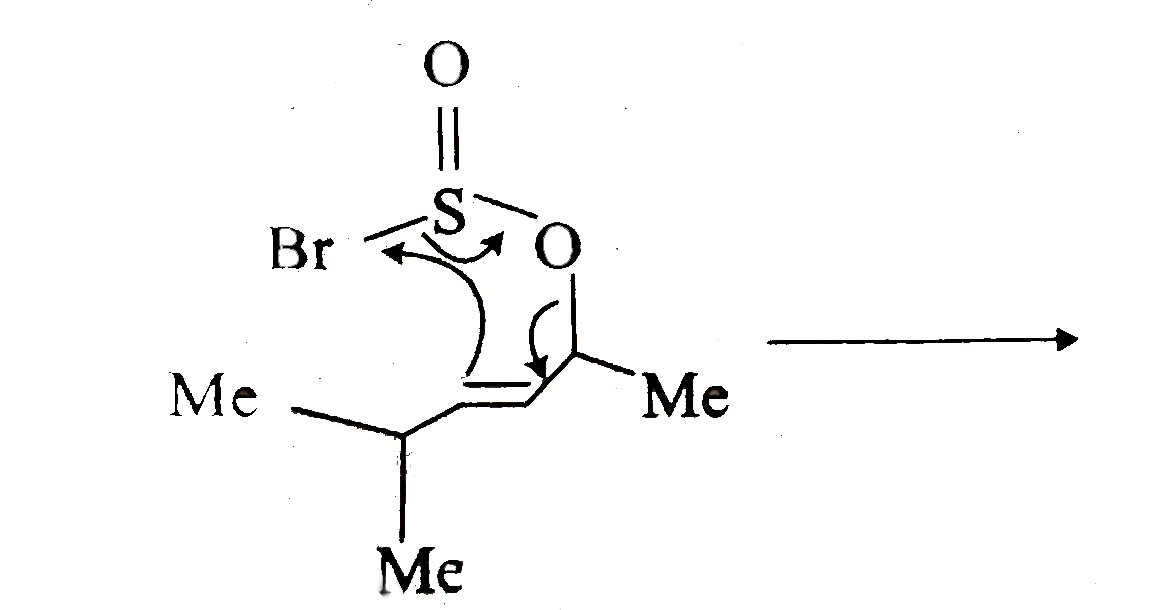
View SolutionGive the stability of the following resonance structures
(a) `H_(2)C = overset(o+)N =overset(Θ)N`
(b) `H_(2)overset(o+)C -N =overset(Θ)N`
(c ) `H_(2)overset(Θ)C -overset(o+)N -= N`
(d) `H_(2) overset(Θ)C - N = overset(o+)N` .
View SolutionWrite the correct resonance structure of the given compound.
 .
.
View SolutionGive the correct stability order of the following species :
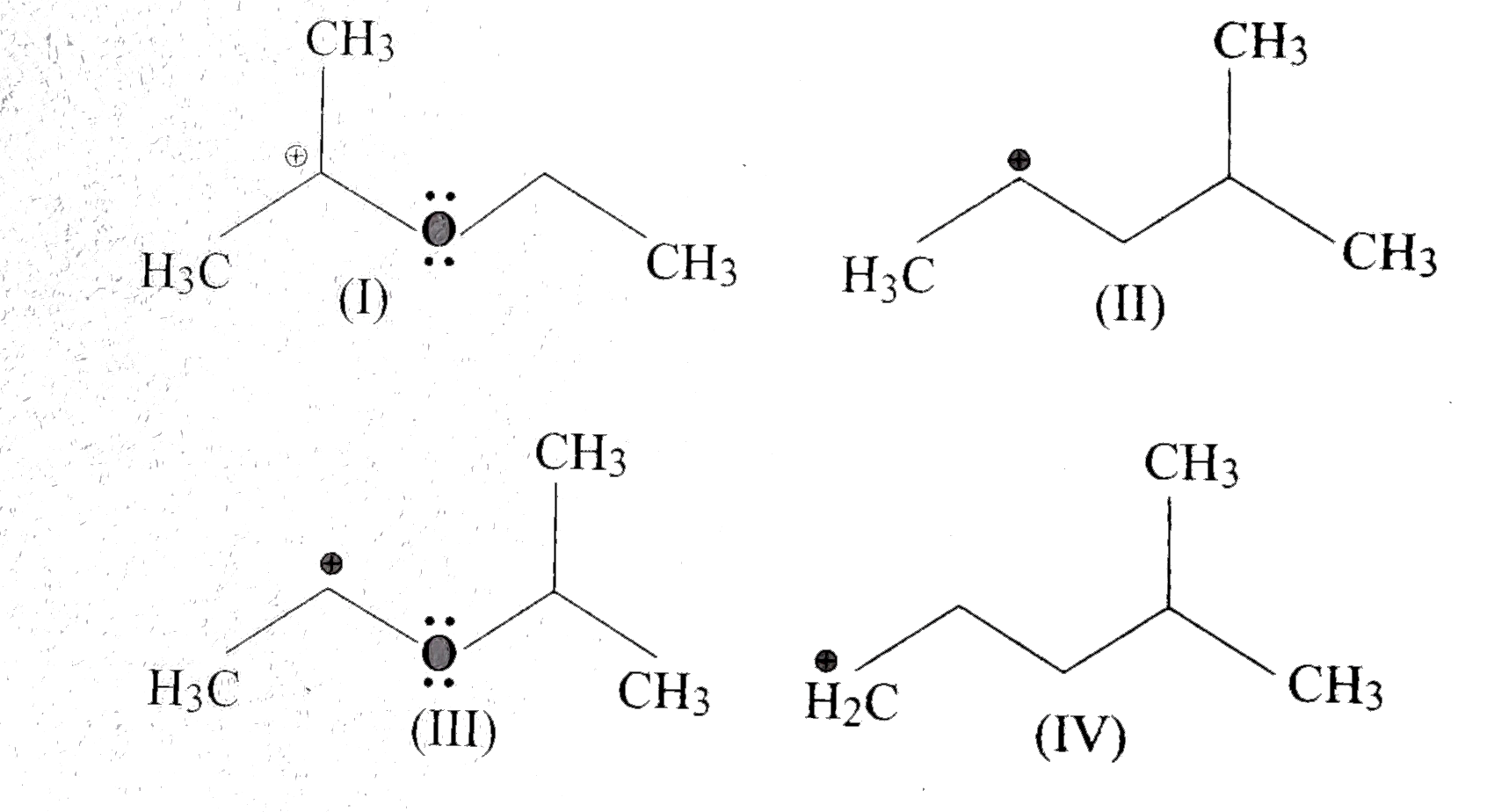
View SolutionExplain the following :
(a) Why `MeNH overset (oplus) CH_2` (I) is more stable more than `MeCH_2 overset (oplus) CH_2` (II) when both are `1^@` carbocations ?
(b) Which of the following intermediate is unstable ?
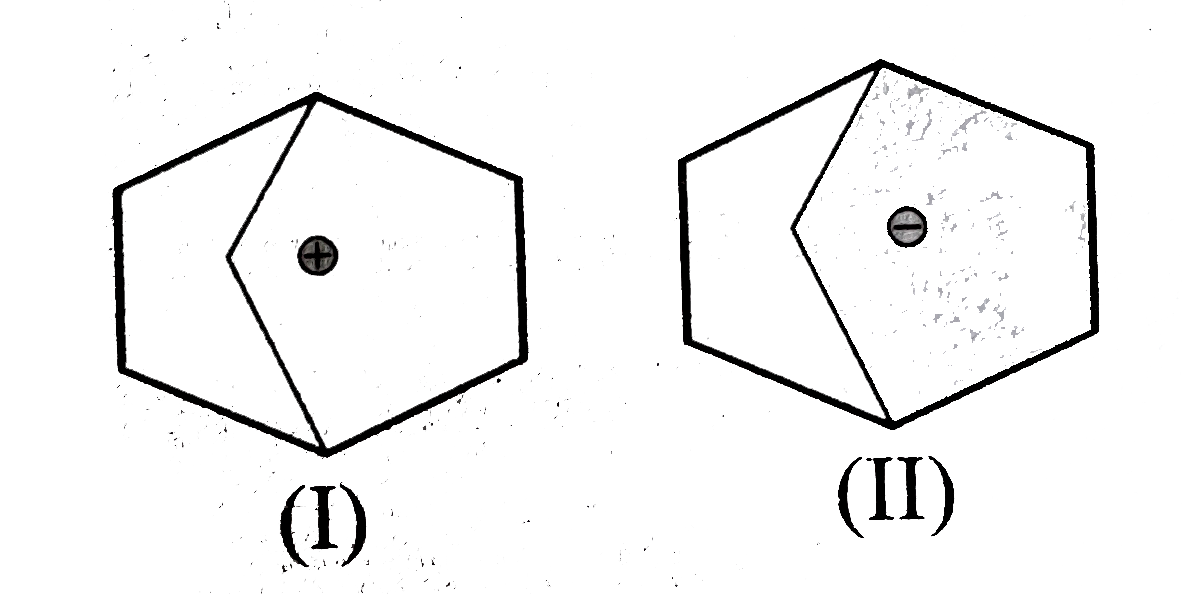
( c) Why allylic free radical `(CH_2 - CH = CH_2) (I)` is more stable than propy1 free radical `(dot C H_2 - CH_2 - CH_3) (II)`, when both are `1^@` free radicals ?
(d) Arrange the following in the decreasing order of their stabilities :
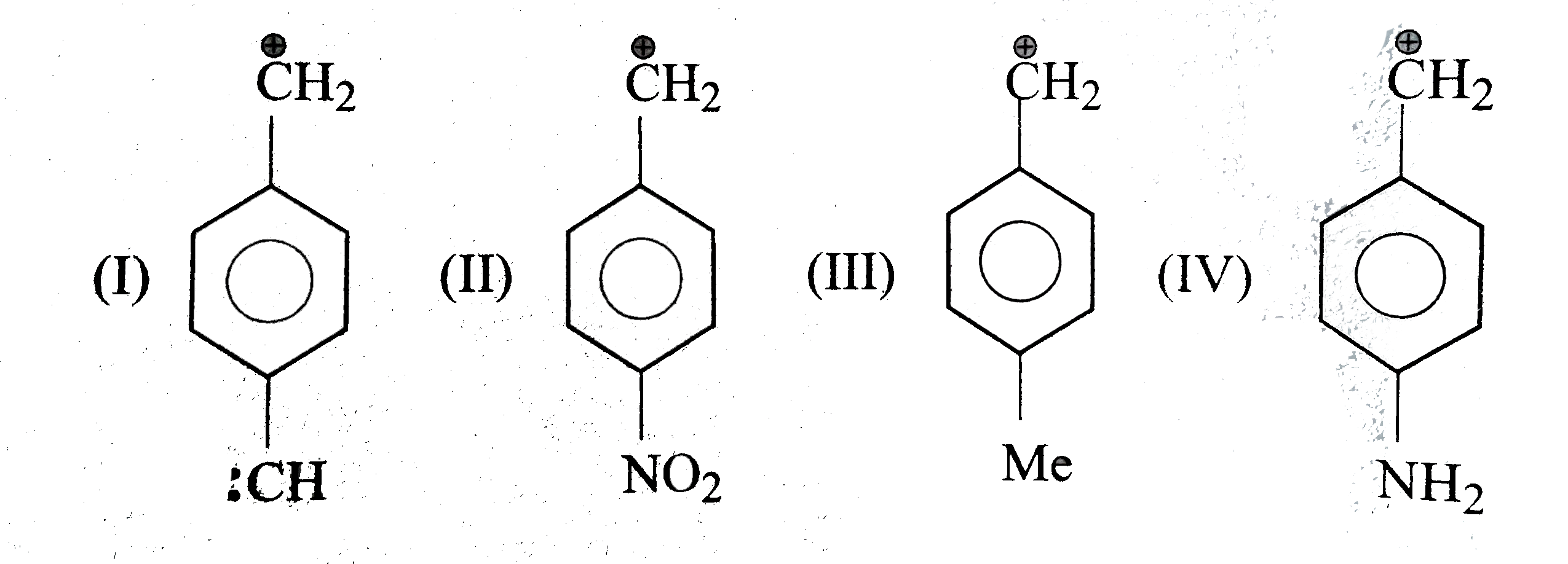
( e) Which of the following resonance structures of `p-nitro` phenoxide is not feasible ?
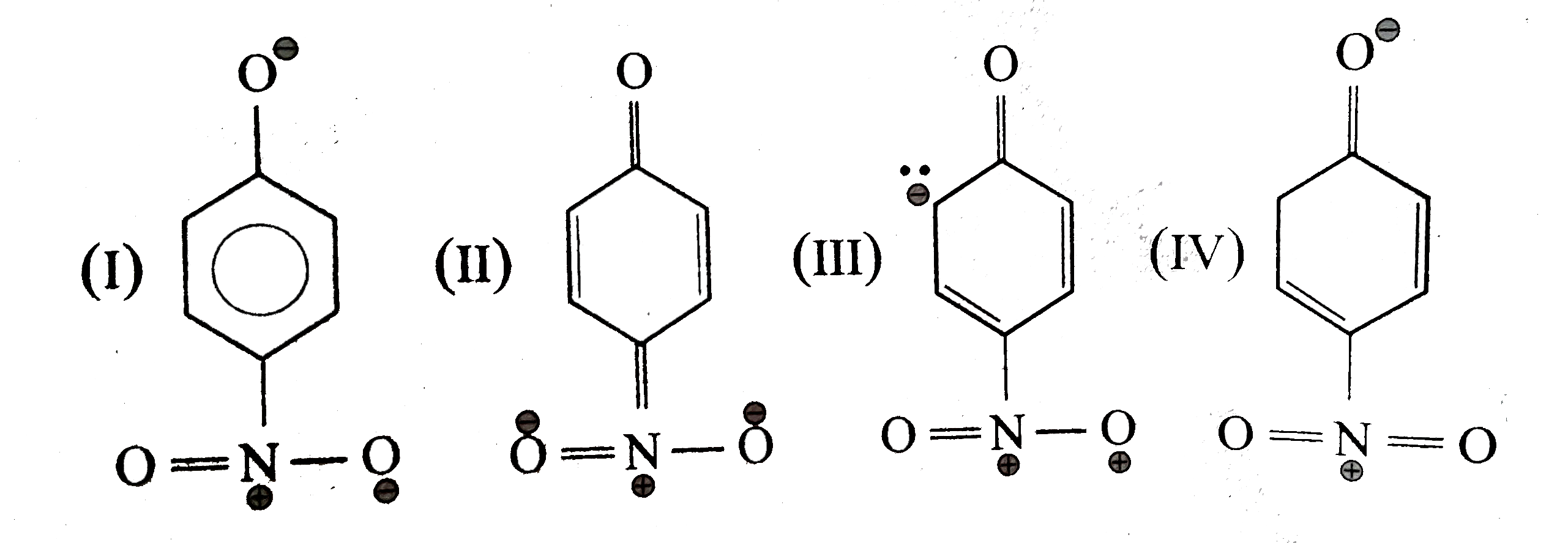 .
.
(f) Which of the more stable carbocation ?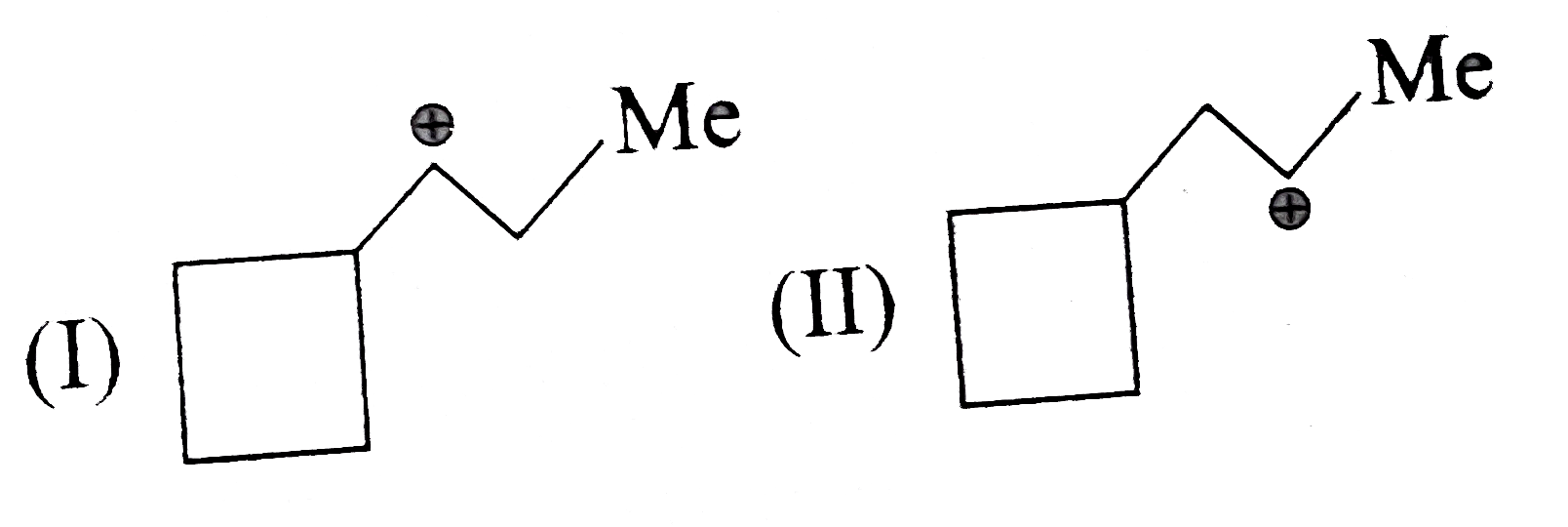 .
.
View SolutionGive decreasing order of the stabilities of the following :
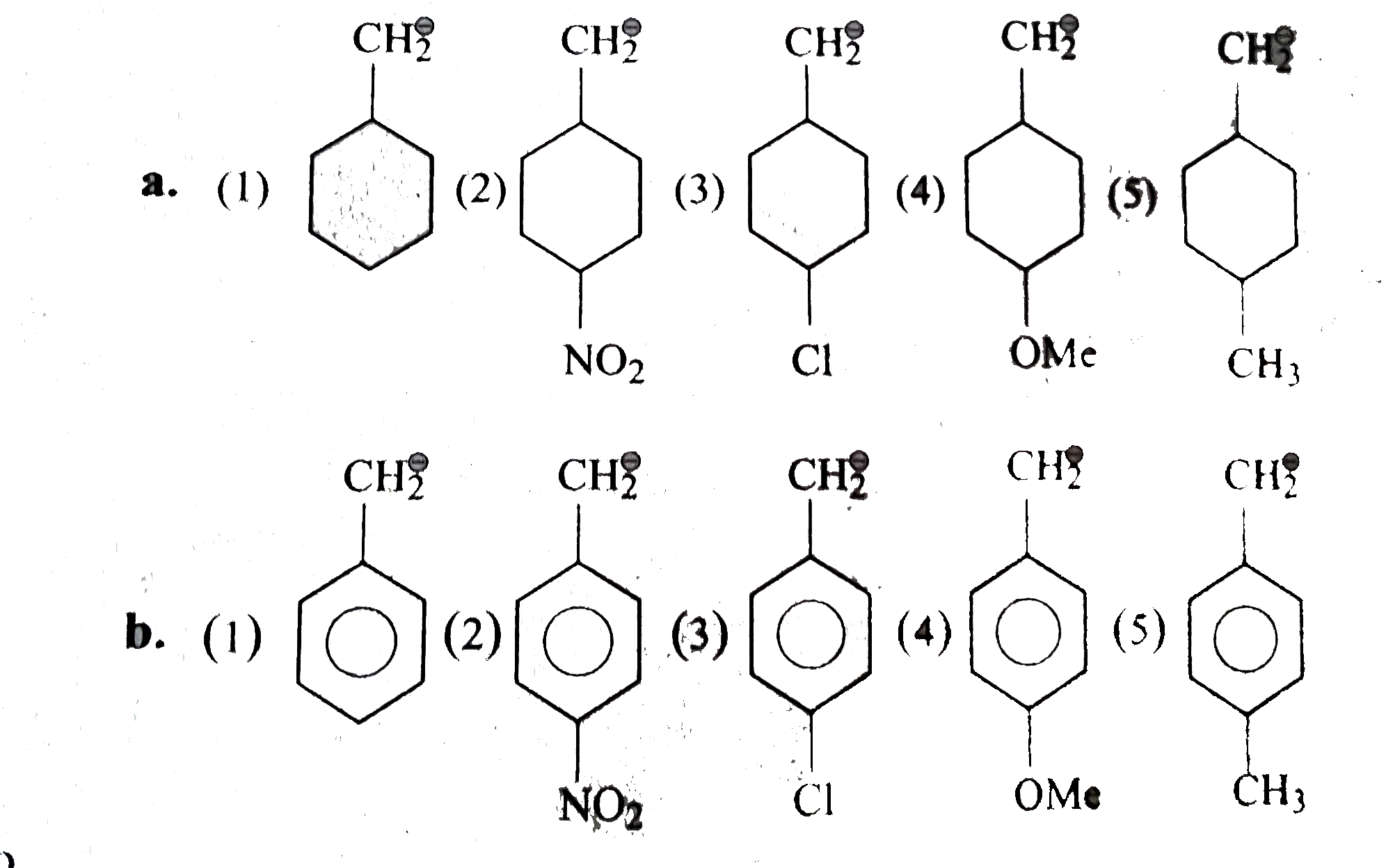
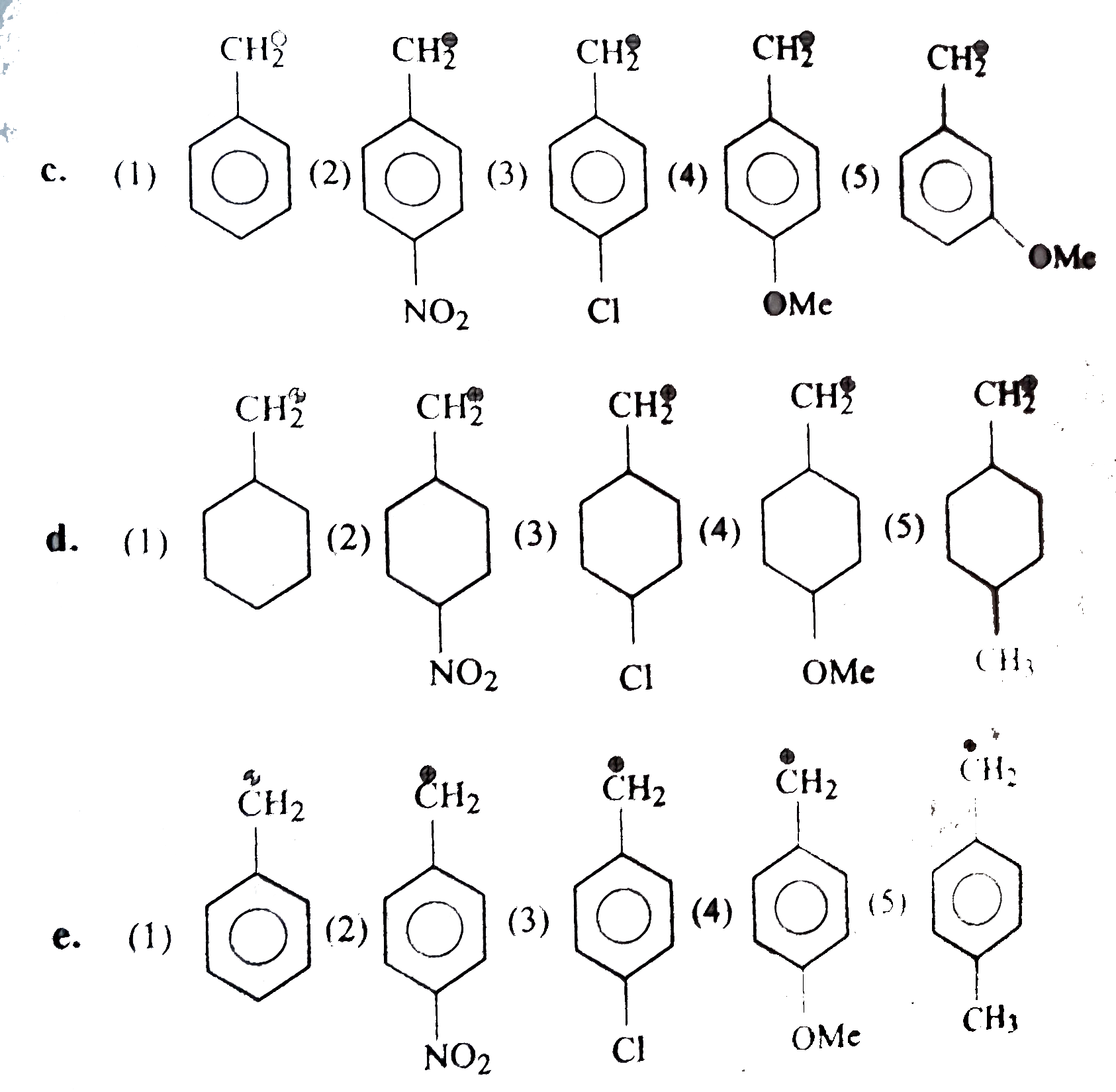
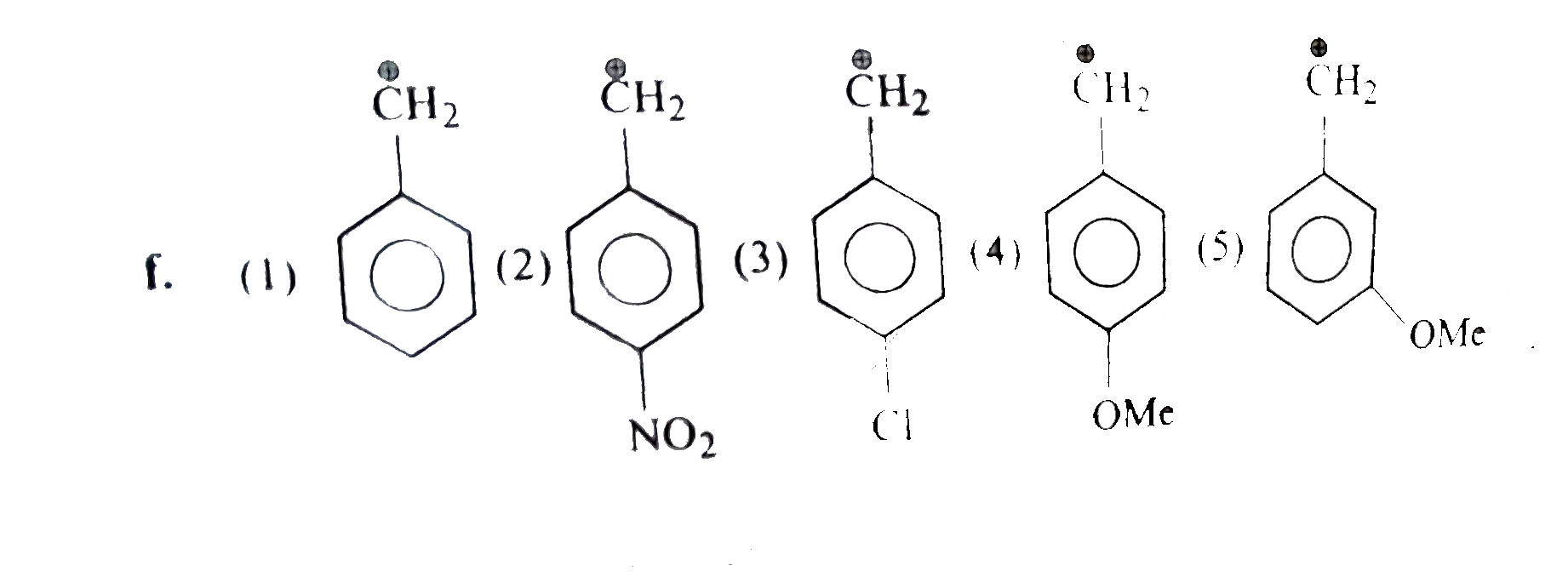
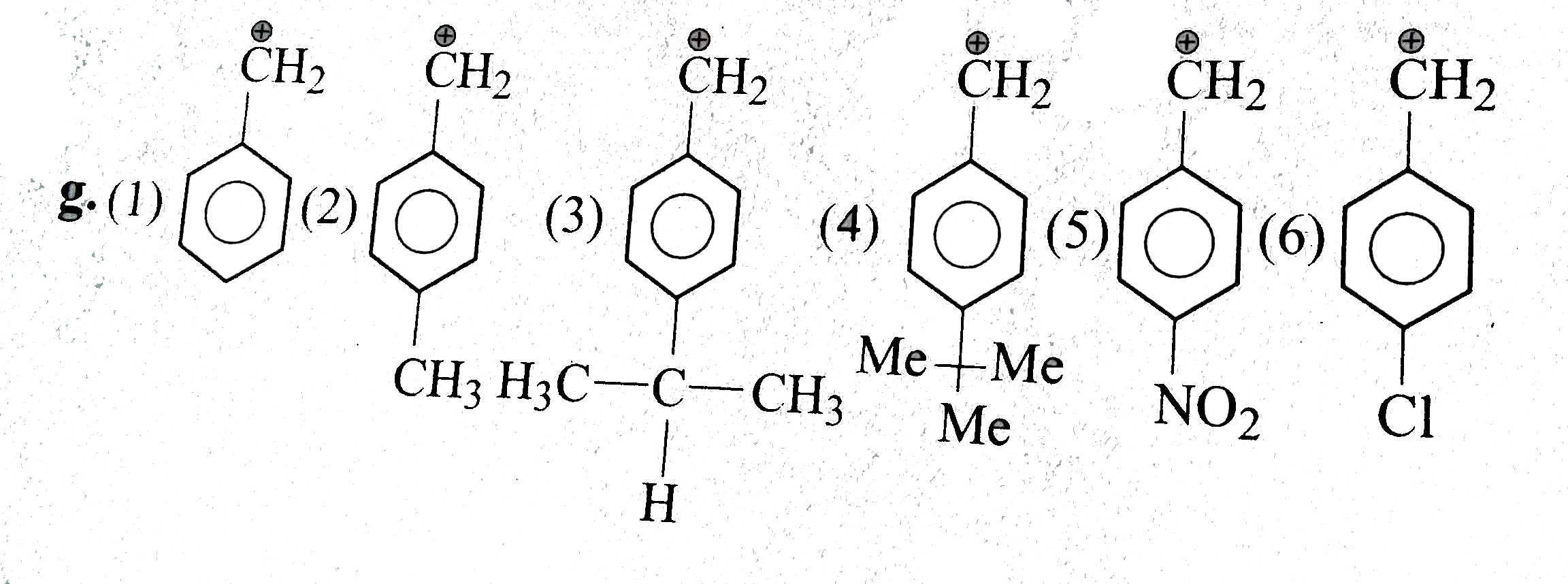
View SolutionArrange the following compounds in the order of increasing boiling points :
(i) `CH_3COC1`
(ii) `(CH_3 CO)_2 O`
(iii) `CH_3 CONH_2`
(iv) `CH_3 COOH`.
View SolutionArrange the compounds of each of the following sub-questions :
(a) In decreasing order of boiling points.
(b) In the decreasing order of solubility in water.
(i) (1) Ethanol
(2) Propane
(3) Pentanol
(ii) (1) Butane
(2) 1,2,3,-Pentanetriol
(3) Buty1 alcohol (iii) (1) Pentane
(2) Pentanol
(3) `1-Hexanol`.
View SolutionArrange the following in the decreasing order of boiling points :
(i) (1) `C_3 H_8`
(2) `C_2 H_5 OH`
(3) `(CH_3)_2 O`
(4) `CH_2 OH CH_2 OH`
(ii) (1) `3-Pentanol`
(2) `n-pentane
View SolutionArrange the following alcohols :
(a) In the decreasing order of their boiling points.
(b) In the decreasing order of their solubility in water.
(1) `n-Buty1 alcohol`
(2) `sec-Buty1 alcohol`
(3) `tert-Buty1 alcohol`.
View SolutionArrange the following alcohols in the decreasing order of reactivity towards
(a) Lucas reagent
Sodium metal
(1) 1-Butano1
(2) sodium metal
(3) 2-Methy1-2-propanol.
View SolutionArrange the following alchols in the decreasing order of their reactivity with `HRr` :
(1) `C_6 H_5CH_2OH`
(2) `(C_6H_5)_2 CHOH`
(3) `(C_6H_5)_3 COH`
(4) `p-O_2 NC_6H_4 CH_2OH`
(5) `p-C1C_6 H_4CH_2OH`.
View SolutionArrange the following in the decreasing order of acidity :
(i) (1) `n-`Butanol
(2) Methy1 alcohol
(3) sec-Butanol
(4) rert-Butanol
(ii) (1) `HCOOH`
(2) `CH_3 COOH`
(3) `C_2H_5COOH`
(4) `C_6H_5 COOH`
(5) `(CH_3)_2CHCOOH`
(6) `CH_2 C1COOH`
(iii) (1) `CH_3 CH_2CH_2COOH`
(2) `CH_3 CH_2 CHC1COOH`
(3) `CH_3 CHC1CH_2COOH`
(4) `CH_2 C1CH_2 CH_2 COOH`
(iv) (1) `CH_3COOH`
(2) `CH_2C1COOH`
(3) `CHC1_2 COOH`
(4) `C C1_3 COOH`
(v) (1) `CH_3BrCOOH`
(2) `CH_2C1COOH`
(3) `CH_2 FCOOH`
(4) `CH_2 ICOOH`
(vi) (1) `C_6H_5 COOH`
(2) `p-OHC_6 H_4COOH`
(3) `p-CH_3C_6H_4COOH`
(4) `p-C1C_6H_4COOH`
(5) `p-Br C_6H_4COOH`
(6) `p-BO_2C_6 H_4 COOH`
(vii) (1) o-Hydroxybenzoic acid
(2) p-Hydroxybenzoic acid
(3) `2,6-`Dihydroxybenzoic acid.
(viii) (1) `HCOOH`
(2) `C_6 H_5 COOH`
(3) `C_6H_5OH`
(4) `HC1`
(ix) `RCOOH`
(2) `ROH`
(3) `RH`
(4) `NH_3`
(5) `HOH`
(6) `CH -= CH`
(x) (1) Phenol
(2) p-Chlorophenol
(3) p-Nitrophenol
(4) m-Cresol
(xi) (1) Phenol
(2) m-Chlorophenol
(3) m-Nitrophenol
(4) m-Cresol
(xii) (1) Phenol
(2) Benzoic acid
(3) p-Nitrophenol
(4) Carbonic acid
(xiii) (1) Phenol
(2) Benzyl alcohol
(3) Benzene sulphonic acid
(4) Benzoic acid
(xiv) (1) Phenol
(2) p-Chlorophenol
(3) 2,4,-Dichlorophenol
(4) 2,4,6-Trichlorophenol
(xv) (1) Nitroform `HC(NO_2)_3`
(2) Cyanoform `HC(CN)_3`
(3) `CHC1_3`
(xvi) (1) `CH_3 SO_2CH_3`
(2) `CH_3NO_2`
(xvii) (1) `CH_3 BO - O^(Ө)`
(2) `CH_3CHO`
(3) `CH_3 COOR`.
View SolutionArrange the following in the order of decreasing basic character :
(a) (1) `CH_3NH_2`
(2) `(CH_3)_2NH`
(3) `C_6H_5NH_2`
`NH_3`
(b) (1) `CH_3NH_2`
(2) `(CH_3)_2NH`
(3) `CH_3)_3N`
(4) `C_6H_5NH_2`
( c) (1) `NH_3`
(2) `CH_3NH_2`
(3) `C_6H_5NH_2`
(4) `(C_6H_5)_2NH`
(5) `(C_6H_5)_3 N`
(d) (1) `C_6H_5NH_2`
(2) `p-NO_2C_6H_4NH_2`
(3) `m-NO_2C_6H_4NH_2`
(4) `p-CH_3OC_6H_4NH_2`
( e) (1) `p-`Toluidine
(2) `N,N-`Dimethy1-p-toluidine
(3) `p-`Nitroaniline
(4) Aniline
(f) (1) Methulamine
(2) Dimethylamine
(3) Aniline
(4) `N-`Methylaniline
(g) (1) `RCN`
(2) `RNH_2`
(3) `RN=CHR`
(h) (1) `C_2H_5NH_2`
(2) `(iso-C_3H_7)_3N`
(3) `CH_3CONH_2`
(4) `CH_3 overset (Ө) N HN a^(oplus)`
(i) (1) `overset (Ө) N H_2`
(2) `HC -= C^(Ө)`
(3) `.^(Ө)OH`
(4) `.^(Ө)OR`
(5) `R^(Ө)`
(6) `RCOO^(Ө)`
(j) (1) `H^(Ө)`
(2) `C1^(Ө)`
(3) `NH_2^(Ө)`
(4) `RCOO^(Ө)`
(5) `RO^(Ө)`
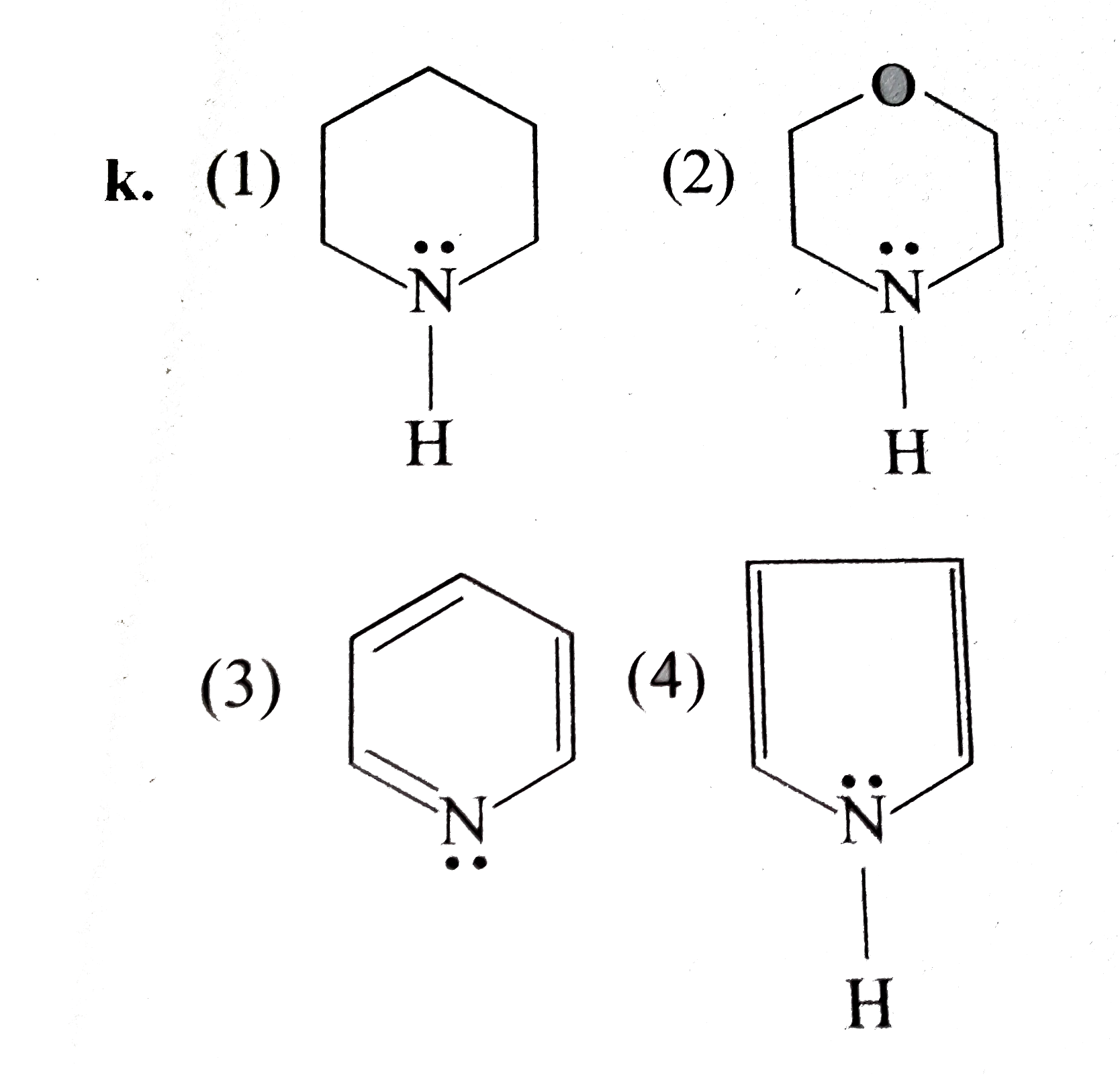 .
.
View SolutionArrange in decreasing order of basicity.
(1) `m-BO_2-C_6H_4-NH_2`
(2) `C_6H_5NH_2`
(3) `p-NO_2-C_6H_4NH_2`
(4) `o-NO_2-C_6H_4NH_2`
(b) Acidic character of :
(1) `3-Butenoic acid
(2) `3-Butynoic acid
( c) (1) `(CH_3)_3 N`
(2)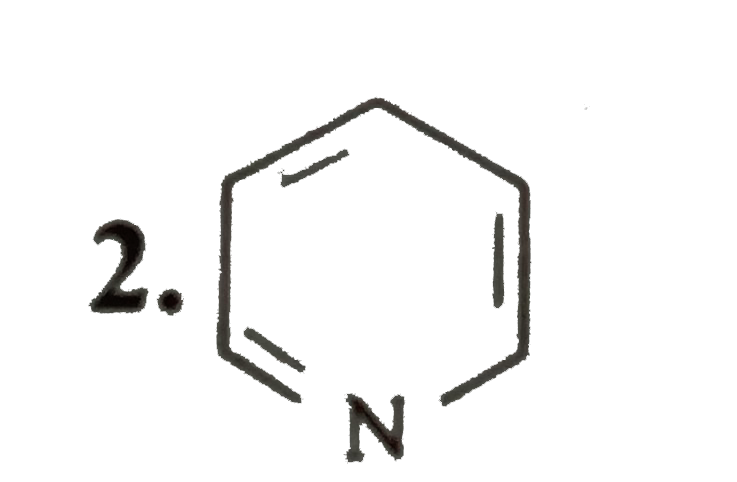
(3) `CH_3-C -= N`
(d) Acidic character of :
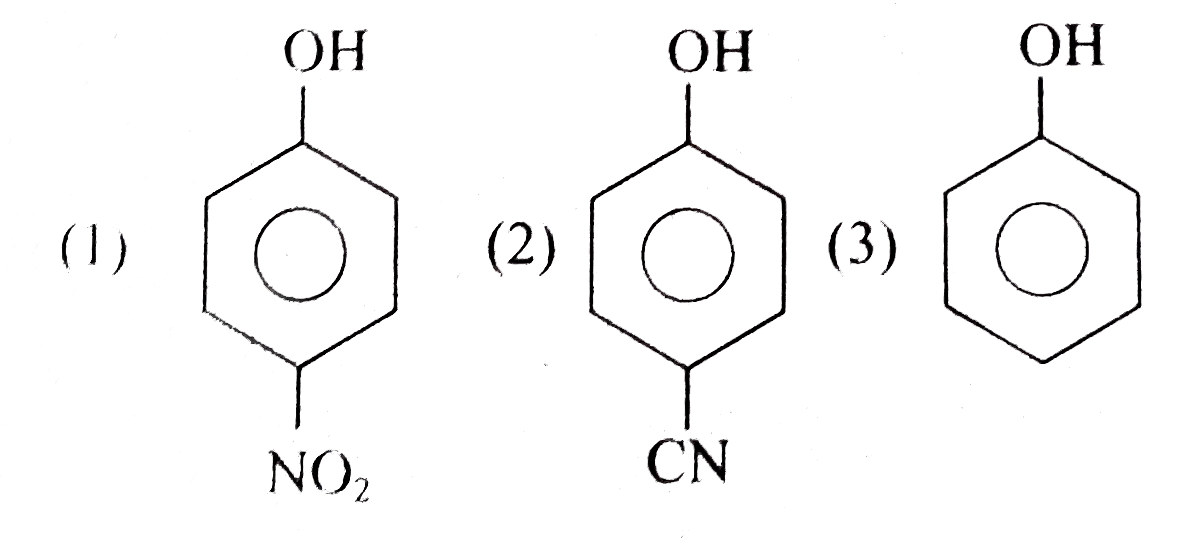
(e) Basic character of :

(f) Basic character at `a,b,` and `c : H_2 overset (a) underset N(ddot)`
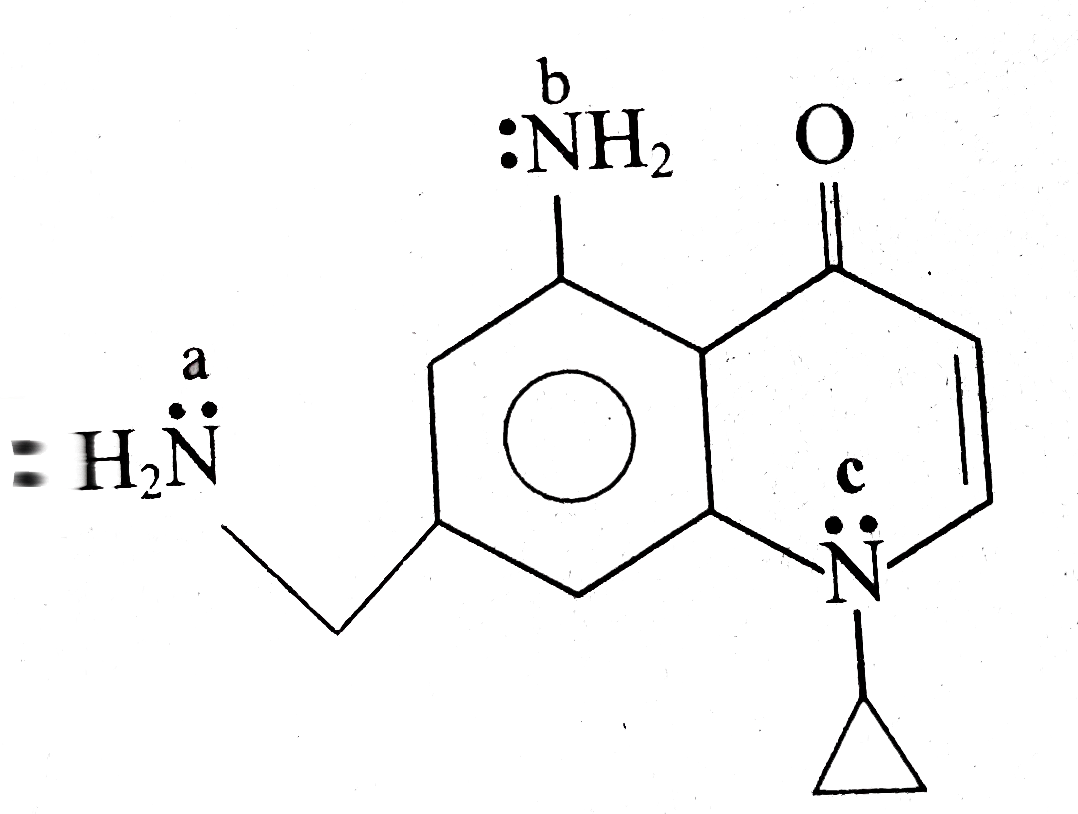
(g) Acidic Character : `o-,m-,` and `p-aminobenzoic` acid and benzoic acid.
(h) Acidic character of `p-chloro`, bromo, iodo, and fluoro phenols and phenol.
(i) Give the decreasing order of acidic character at `a`, `b,c` and `d`.
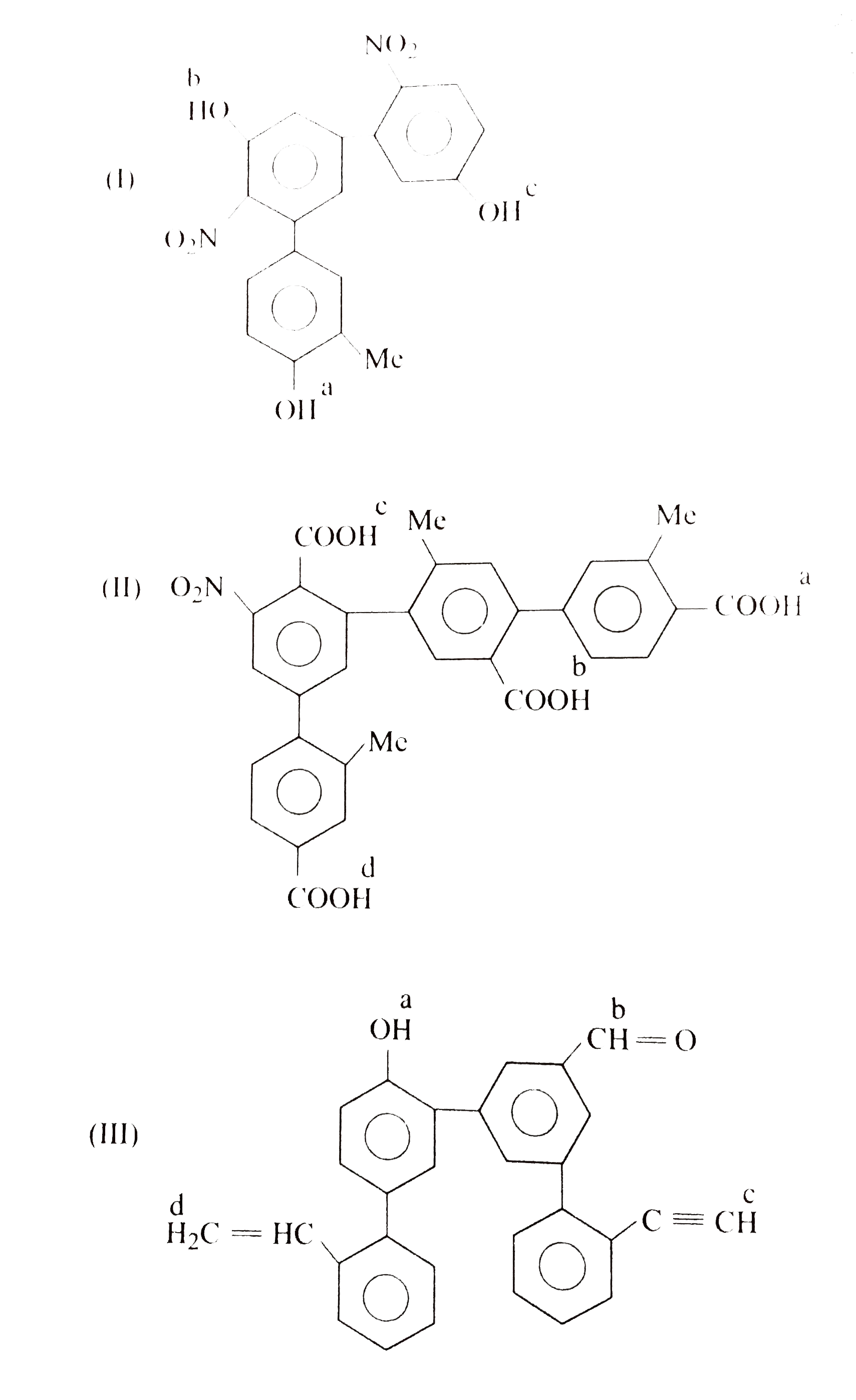 .
.
View SolutionCompare the acidities of amide `(R-underset(O)underset(||)(C)-NH_(2))` and sulphonamide `(R-underset(O)underset(||)overset(O)overset(|)S-NH_(2))`
View SolutionWhich of the following pairs would have higher boiling points ?

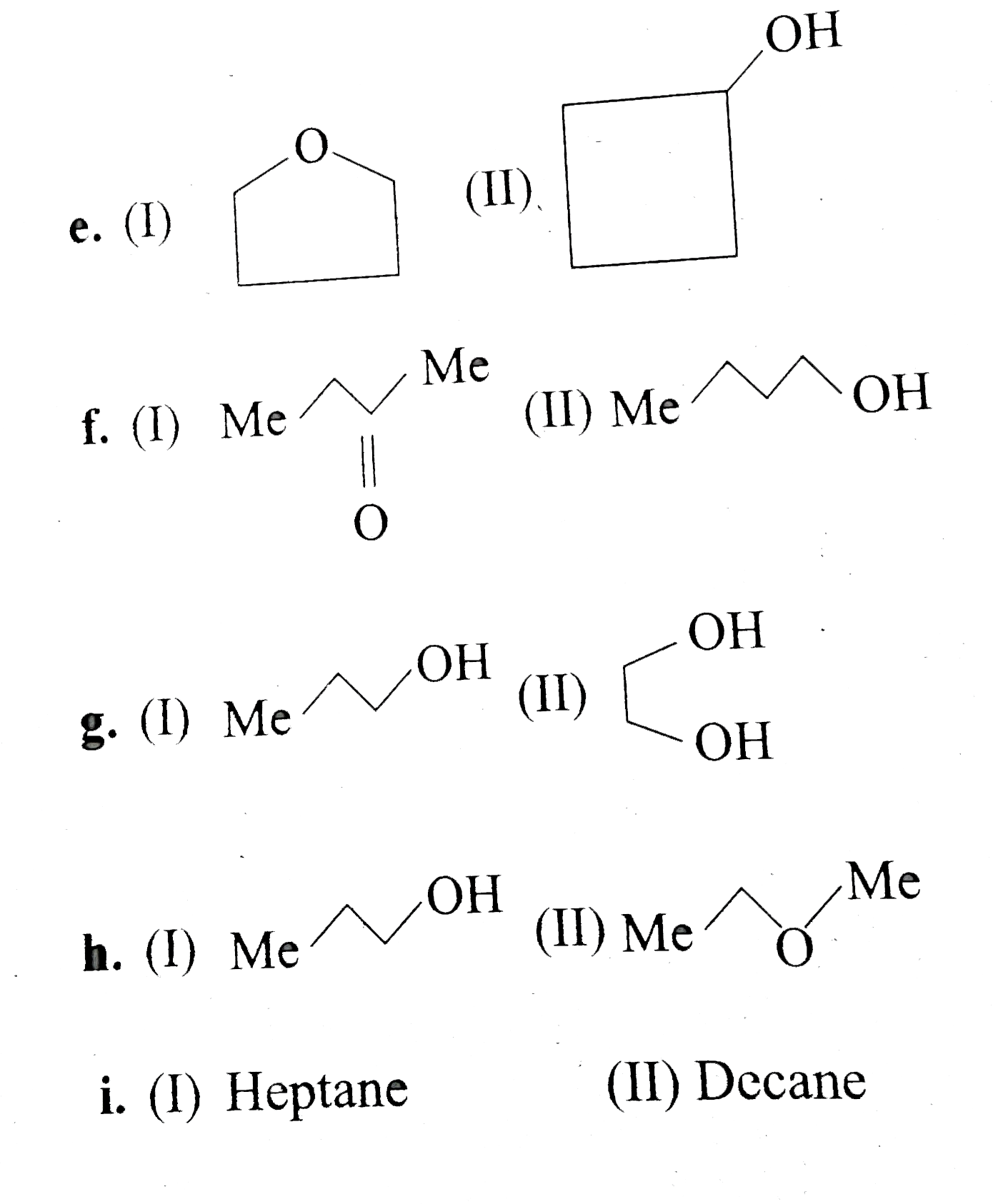
View Solution
Solved Example questions and complete solutions for chapter GENERAL ORGANIC CHEMISTRY of CENGAGE CHEMISTRY (HINGLISH) of Class 11